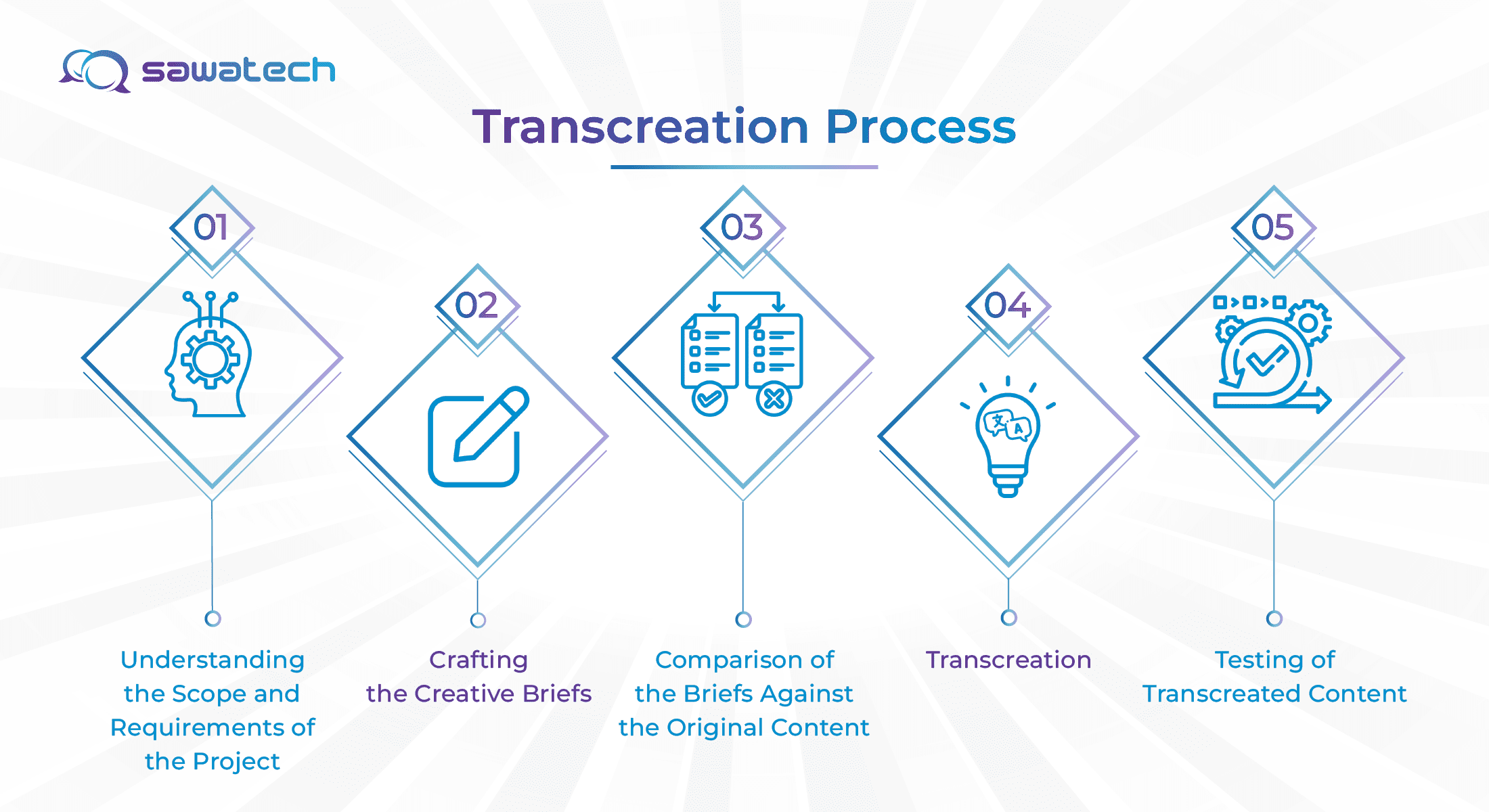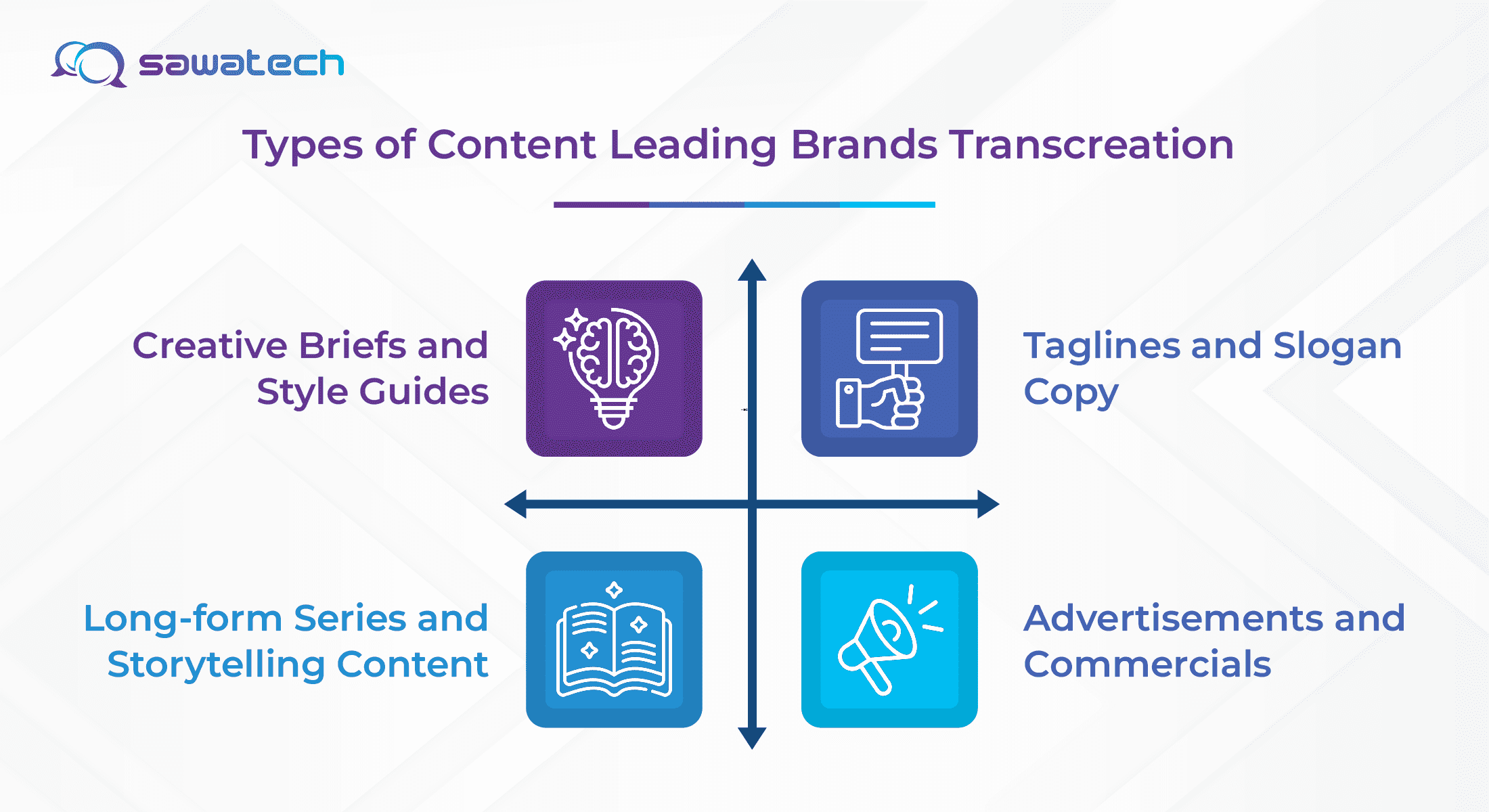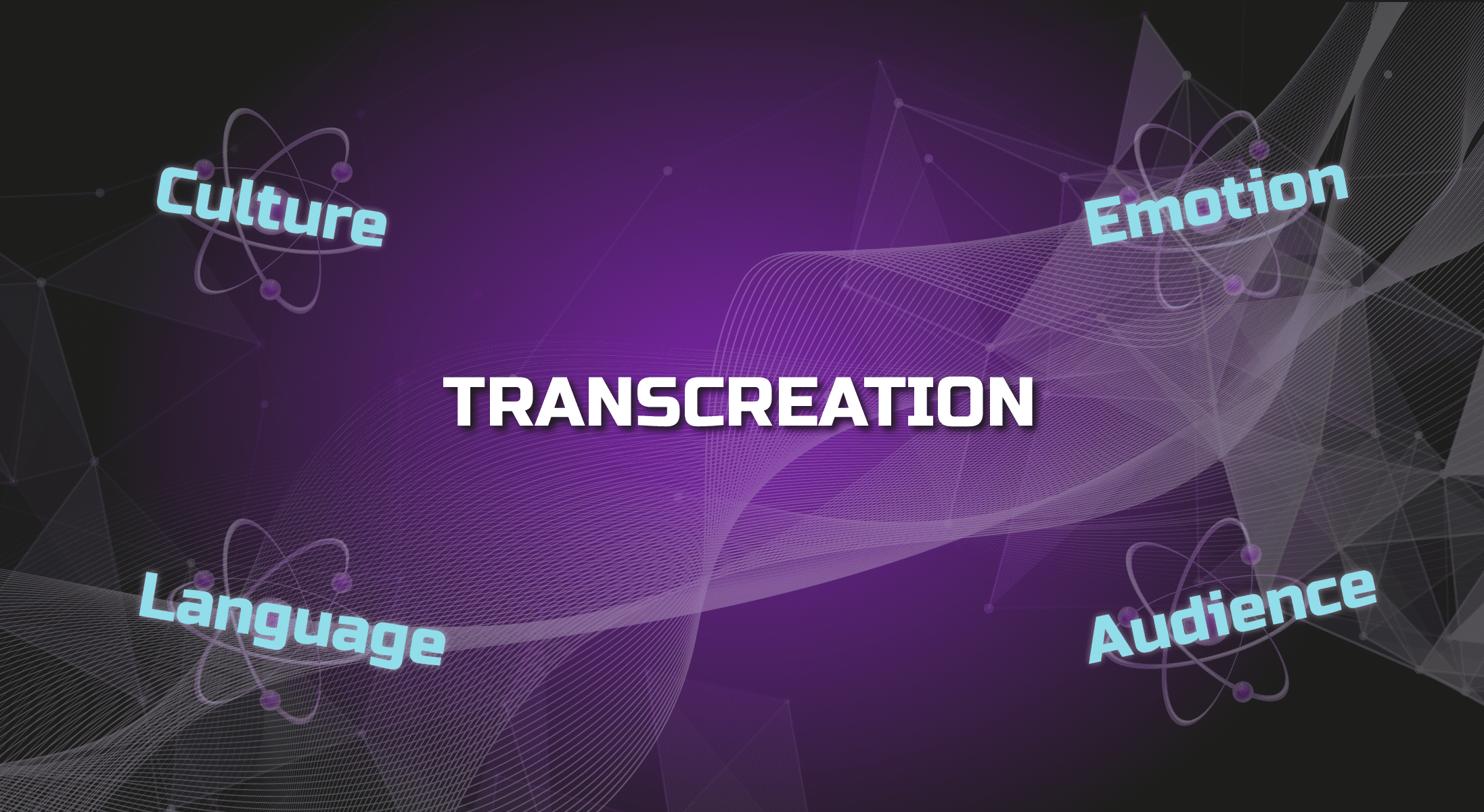Introduction to Transcreation
Translating an idea from one culture to another is a very delicate process. Cultural sensitivity is a factor to consider when taking a product into a new market across borders, as it should win the hearts and minds of its audience. Along with other market entry strategies, transcreation can effectively bring any product from one market into its target market.
The term transcreation is a derivative of two words, “translation” and “creation.” Translation is the method of conveying a message from a source language to a target language. In this sense, it is more basic when compared to transcreation, which takes on a more creative approach to translation.
Transcreation is the process of conveying a message from a particular culture to another, while preserving the entire essence of the culture. It ensures that the content resonates with the target audience and doesn’t sound bizarre or vague.
Why is Transcreation a Trend in the Translation Industry?
In past decades, translators have seen needs change, from making generalized traditional translations, to infusing more cultural mores and values, creating tailored content that resonates with diverse audiences.
Today, transcreation has become an important strategy, particularly because when done correctly, it helps businesses capture the attention of consumers in foreign markets.
Importance of Transcreation
For businesses looking to gain entry into foreign marketplaces, incorporating transcreation into their localization strategy is vital. transcreation helps businesses better connect with their target audience through its unique ability to rise above the two most popular challenges to international trade: language and cultural barriers.
Brands choose transcreation to:
- Connect with an audience in a more fine-tuned way, in order to foster brand loyalty and customer retention
- Demonstrate strong market knowledge, while establishing brand presence and recognition
- Increase sales, conversion rates, and ROI
Quality transcreation may be a greater investment, but is less costly in the long run. This is because it is a service for brands who want to ensure that their international audience is understood and have a better experience than they would buying from a local competitor.
Who can Transcreate?
Transcreation requires expertise. The entire process of transcreation is carried out by transcreators, who are professional translators with more specialized abilities. Some of the qualities to look out for when hiring a transcreator include:
1. Great language skills. Must be born, educated and reside in the country of the target audience, having full bilingual proficiency.
2. In depth knowledge of the target market. He or she must be able to think like and live within the target country or region.
3. Advertising, copywriting and localization skills. Transcreation required the ability to creatively write to properly adapt and refine a message for a target audience.
4. Have knowledge of the commercial laws and regulations of the target country.
5. Must be a subject matter expert in the area of content creation.
Transcreation, Translation and Localization: Core Differences
Translation is simply converting texts from a source language into a desired language. It is very basic and sometimes does not do the trick when it comes to resonating with a specific audience.
Transcreation on the other hand does the job better. It is a creative process that is quite complex, delicate and takes extra steps to ensure the language and cultural context is preserved.
Transcreation takes translation a step further with its creative approach. The presence of humor, cultural nuances and literary elements are examples of how much better transcreation can be compared to simple translation.
There is much confusion in the industry around the differences between transcreation and localization. However, localization should only be considered a next step AFTER Translation. It develops translated content to a point where it can completely align with the culture of the target audience.
On the other hand, transcreation is a creative process that completely rewrites the content such that it is specifically designed to be effective in that country. For example, when Starbucks entered the Japanese market, a corporate decision was made to craft a completely different message that is specific to Japanese culture.
Transcreation Process

- Understanding the Scope and Requirements of the Project: It is necessary to define and understand the aim of the project before jumping straight in. Usually, the primary goal of any transcreation process is to capture the essence of the original message. So, it is always important at the outset to determine whether a project is feasible by clarifying the objectives and assessing if the goals of transcreating a piece of content is achievable.
- Crafting the Creative Briefs: Unlike translation which requires starting from the original text, transcreation starts with creating briefs. The marketing Team will create a brief and employ the services of copywriters to craft a message from them.
- Comparison of the Briefs Against the Original Content: This is a step towards the actual Transcreation task. The transcreation Team analyzes the tone, intent, and style of the creative briefs against the original content to ensure that it conveys the same message.
- Transcreation: This is the creative process that begins right after a thorough comparison and analysis of the original content and brief has been carried out. The transcreation Team takes a deeper dive into recreating the message into the language of target audience, taking into considerations the cultural nuances and other literary elements like humor, idioms and wordplay.
- Testing of Transcreated Content: The next step after transcreation is to test the content by running sample tests on a sample of target audience in order to determine if the desired outcome has been achieved. The transcreation Team can do this by organizing people from within the target audience and running the content for them to watch. Taking this step helps brands to gauge reactions and tell if the content was able to trigger an emotional connection with the audience.
Transcreation Tips
1. Study the culture of the intended target audience to avoid cultural insensitivity and overstepping boundaries. A gesture may be okay in a particular culture, but may not be tolerated in another.
2. Do not box culture. Something as simple as colors and symbols can be culturally sensitive to a people. The color red, for example, may represent hearts or love in some cultures, but in others it could mean bloodshed or death.
3. Idiomatic expressions can be quite tricky. It is not always easy to find a cultural equivalent for an idiom. As transcreators, we ensure to cleverly fit the idiomatic expressions appropriately into the target culture.
Four Types of Content Leading Brands Transcreation
Transcreation is crucial in marketing and advertising to a global audience from different languages and cultural backgrounds.

Here are four types of different content brands we may consider for transcreation.
1. Creative Briefs and Style Guides
Ideally it is necessary for all global marketing Teams to transcreate every campaign and program. Yet, the reality is that transcreation is a daunting task that requires much time and effort. It can be quite challenging to transcreate campaigns and creative briefs to be market-specific each time a brand launches into a new market.
This strenuous process makes transcreating creative briefs and style guides which are the building blocks of any brand’s identity a proactive step to take. It provides the Marketing Teams with a general understanding of a brand’s tone and voice. This would go a long way to save time as each marketing Team can always refer back to such a document as a template for the next transcreation project.
2. Taglines and Slogan Copy
Transcreation is especially necessary when trying to achieve advertising goals. Locally adapted product taglines, slogans and display ads evoke a feeling of emotion and are good examples of how brands can interact and engage with their customers.
A good example of successful transcreation of a slogan is McDonald’s decision to translate its English slogan from “I’m lovin’ it”, to the Spanish rendition of “Me encanta”, which means “I really like it.”
A bad example of transcreation was found in a food vendor’s ad. The tagline, “finger-likin’ good” wasn’t successful in the Chinese market. When translated, it meant “eat your fingers” which turned out to be an unappetizing phraseology for the Chinese market.
3. Long-form Series and Storytelling Content
One of the ways a brand can reach its global audience is through storytelling and content creation that customers will be eager to engage. Long-form content cuts across blog posts, eBooks, tutorials, white papers, as well as long videos.
For instance, if a food blog decides to launch a blog series on healthy meal recipes, the marketing Team needs to take into account the food preferences, cultural and religious considerations, and dietary restrictions that are unique to the target audience. Otherwise, it would make no sense translating a blog series about a healthy food recipe that their audience is not interested in using.
It’s very clear that a carefully curated story that is locally relevant can evoke the right emotions and is especially necessary in ensuring a brand’s success in any given market.
4. Advertisements and Commercials
Transcreation is the secret weapon to achieving the number one objective of any proper advertising campaign: increased ROI.
Every marketing Team must strive to understand how their local audience reacts to the key elements of advertisements, such as copy, designs and other brand touch-points in order to effectively customize content that appeals to these customers.
A perfect instance is Red Bull’s smooth penetration into the Chinese market by completely changing its look from its indelible blue and silver color to red. In no time, Red Bull ranked #1 in energy drink brands in China. This is an iconic example of how transcreation helps brands to make lasting impressions on global customers.
Conclusion
Transcreation is a complex and tedious process that takes time to effectively complete. Sending the wrong cultural message could be fatal in reaching a target audience.
In order to avoid such problems, and instead, bring about the successful transcreation of your content, working with a certified localization company like Sawatech is important, to ensure that key considerations are made to ensure the best outcome.



